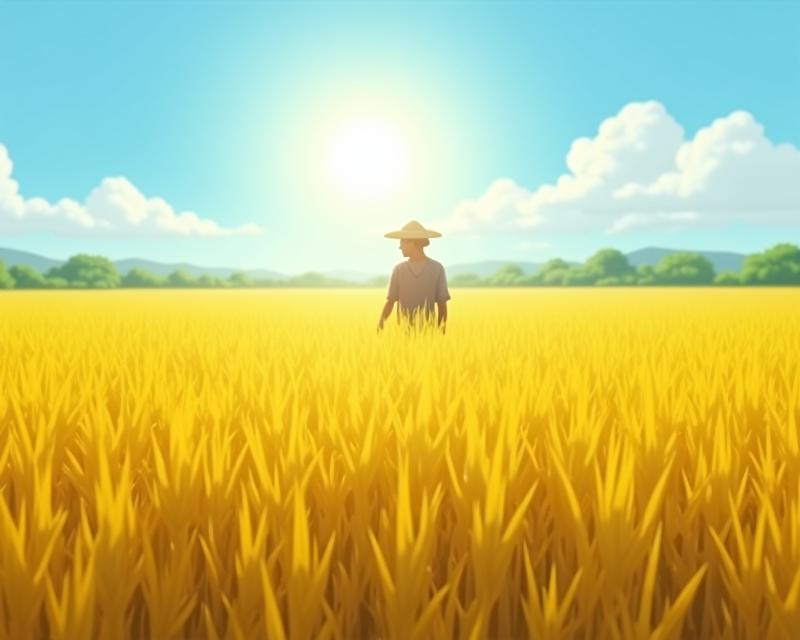Rice Harvest: Knowing When to Cut!
Publish in Crops el 22/07/2025 16:42
Knowing When to Harvest Your Rice
Harvesting rice is a crucial step in the farming cycle, and timing is everything! Getting it right ensures optimal grain quality and yield. Knowing the signs that your rice crop is ready to be cut can make a big difference to your harvest. Here’s a breakdown of what to look for, focusing on moisture content and visual cues.

Moisture Content: The Key Indicator
One of the most important factors is moisture content. Ideally, rice should be harvested when it reaches around 20-25% moisture. Too early, and the grains won't have fully filled out, resulting in lower yields. Too late, and the grains can be damaged by weather or pests, and the moisture can make threshing difficult. Using a moisture meter is the most accurate way to determine this. You can find affordable meters at most agricultural supply stores. If you don't have a meter, a simple test involves picking a handful of rice grains and squeezing them. They should feel firm and slightly pliable, not hard and brittle, nor soft and sticky.
Visual Signs: What Your Field is Telling You
Beyond moisture content, visual cues offer valuable insights. Look for these signs that your rice is nearing harvest time:
- Grain Color: The rice panicles (the seed heads) will turn golden brown. This is a key indicator that the grains are maturing.
- Grain Firmness: As the rice matures, the grains become firm and difficult to crush.
- Head Drooping: The rice heads will begin to droop under their own weight. This indicates that the grains are heavy and full.
- Field Appearance: The overall field will take on a golden hue, contrasting with the green of the stalks.
Ready to Cut & Thresh?
Once you've assessed both the moisture content and the visual signs, it's time to consider cutting and threshing. The ideal time to cut is when the grains are at their peak maturity – typically when the panicles are mostly golden brown and the grains are firm. Cutting too early can lead to significant yield losses. After cutting, the rice needs to be threshed to separate the grains from the stalks. This can be done manually (though labor-intensive!) or with a combine harvester or a threshing machine. Proper threshing is essential for maximizing grain recovery. Remember to consider weather conditions when planning your harvest. Avoid harvesting during heavy rain, as this can damage the grains and make threshing more difficult. Proper timing and careful observation will lead to a successful and bountiful rice harvest!





